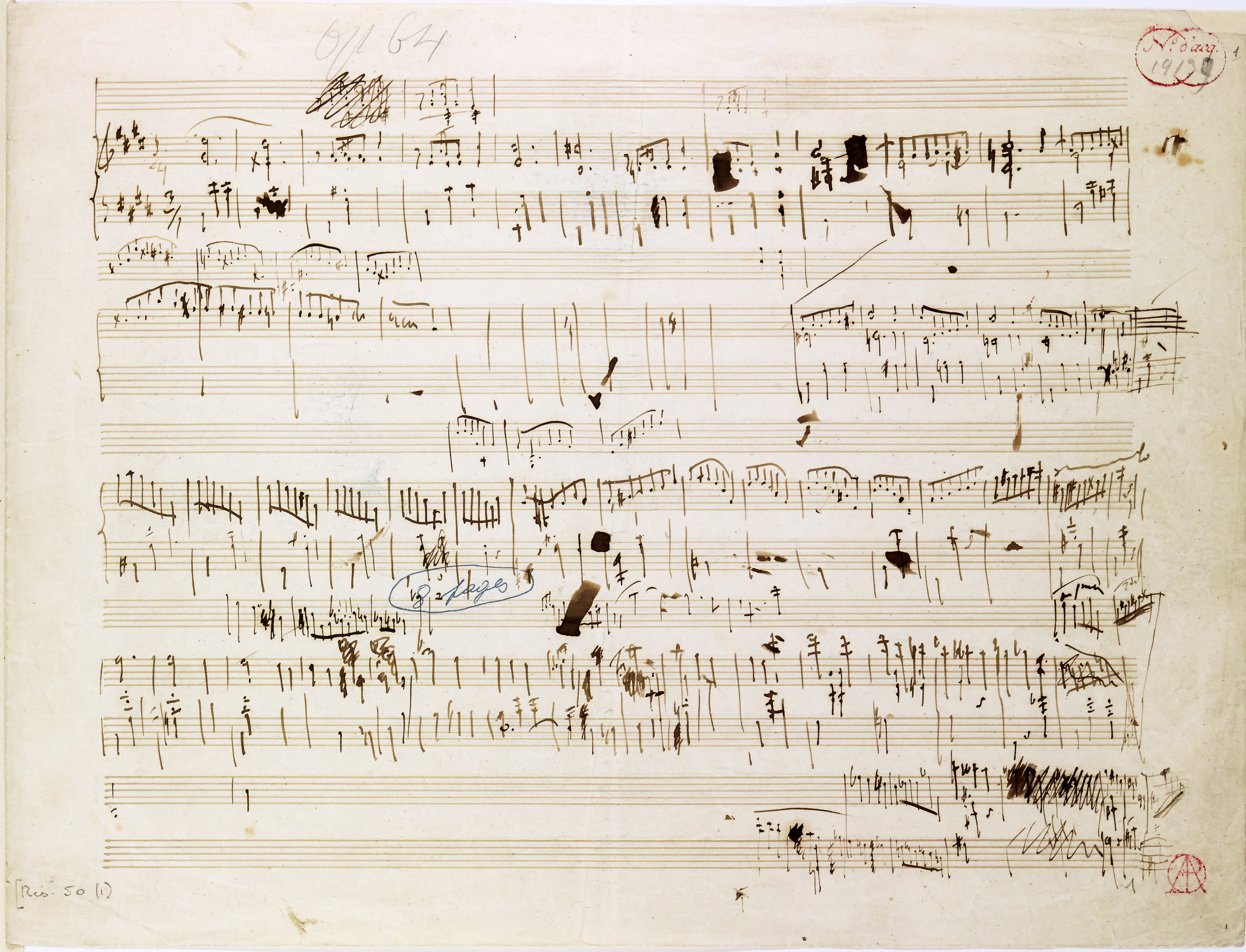Op. 2, Variations in B♭ major
Op. 10, 12 Etudes
Op. 11, Concerto in E minor
Op. 21, Concerto in F minor
Op. 22, Polonaise in E♭ major
Op. 24, 4 Mazurkas
Op. 25, 12 Etudes
Op. 26, 2 Polonaises
Op. 27, 2 Nocturnes
Op. 28, 24 Preludes
Op. 30, 4 Mazurkas
Op. 35, Sonata in B♭ minor
Op. 50, 3 Mazurkas
Op. 63, 3 Mazurkas
Op. 64, 3 Waltzes




Op. 64 No 2, Waltz in C♯ minor
In A (→GE), the entire section is written in a four-flat key signature. In the proofreading of FE (→EE), Chopin changed the notation to the one compliant with D major, prevailing in this section. AI also includes the correct notation with five flats. The notation of As, in which there is no key signature for this section, does not allow us to clearly answer the question whether Chopin considered flats before g
major, prevailing in this section. AI also includes the correct notation with five flats. The notation of As, in which there is no key signature for this section, does not allow us to clearly answer the question whether Chopin considered flats before g notes to be necessary or not – he wrote them in bars 68-70 and 79-80 and omitted in bars 71-76. Considerable evidence of uncertainty surrounding the number of signs in the key signature can be found in the notation of, e.g. the Mazurkas in G
notes to be necessary or not – he wrote them in bars 68-70 and 79-80 and omitted in bars 71-76. Considerable evidence of uncertainty surrounding the number of signs in the key signature can be found in the notation of, e.g. the Mazurkas in G minor, op. 33 no. 1 or in C
minor, op. 33 no. 1 or in C minor, op. 63 no. 3, and less tangible – also in many other situations in various compositions.
minor, op. 63 no. 3, and less tangible – also in many other situations in various compositions.
Since the difference does not have any impact on the sound of music, and the notation with five flats, more convenient for the reader, was eventually introduced by Chopin, we adopt it as the only one and we do not record differences in notation resulting from the distinct number of flats in the key signature. The original notation of A and GE is conveyed by their versions "transcription".
Compare the passage in the sources »
category imprint: Differences between sources; Source & stylistic information
issues: Chopin's hesitations, Errors of A, Authentic corrections of FE, Last key signature sign
notation: Shorthand & other

